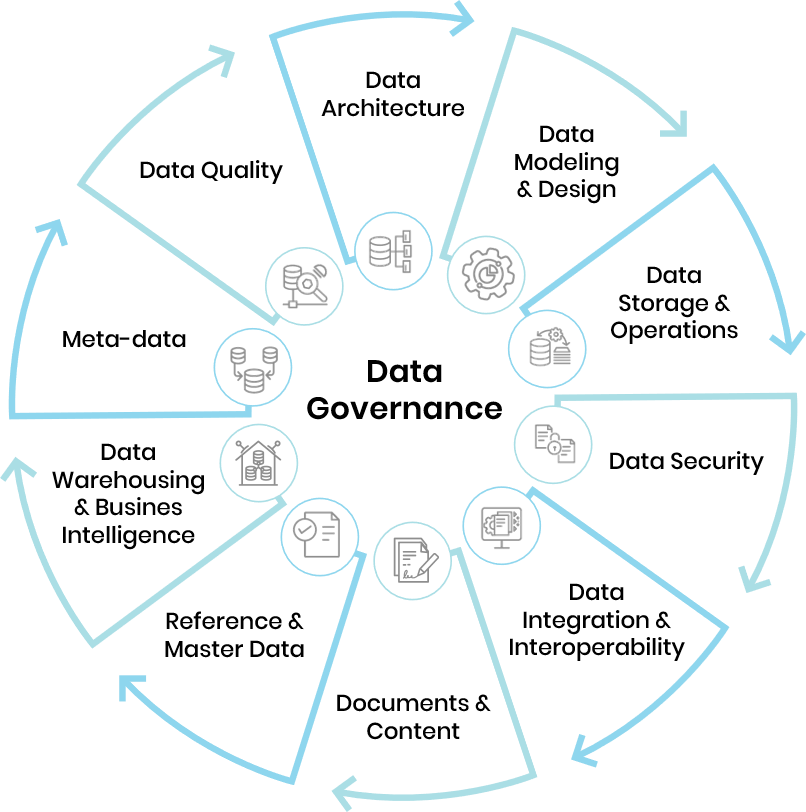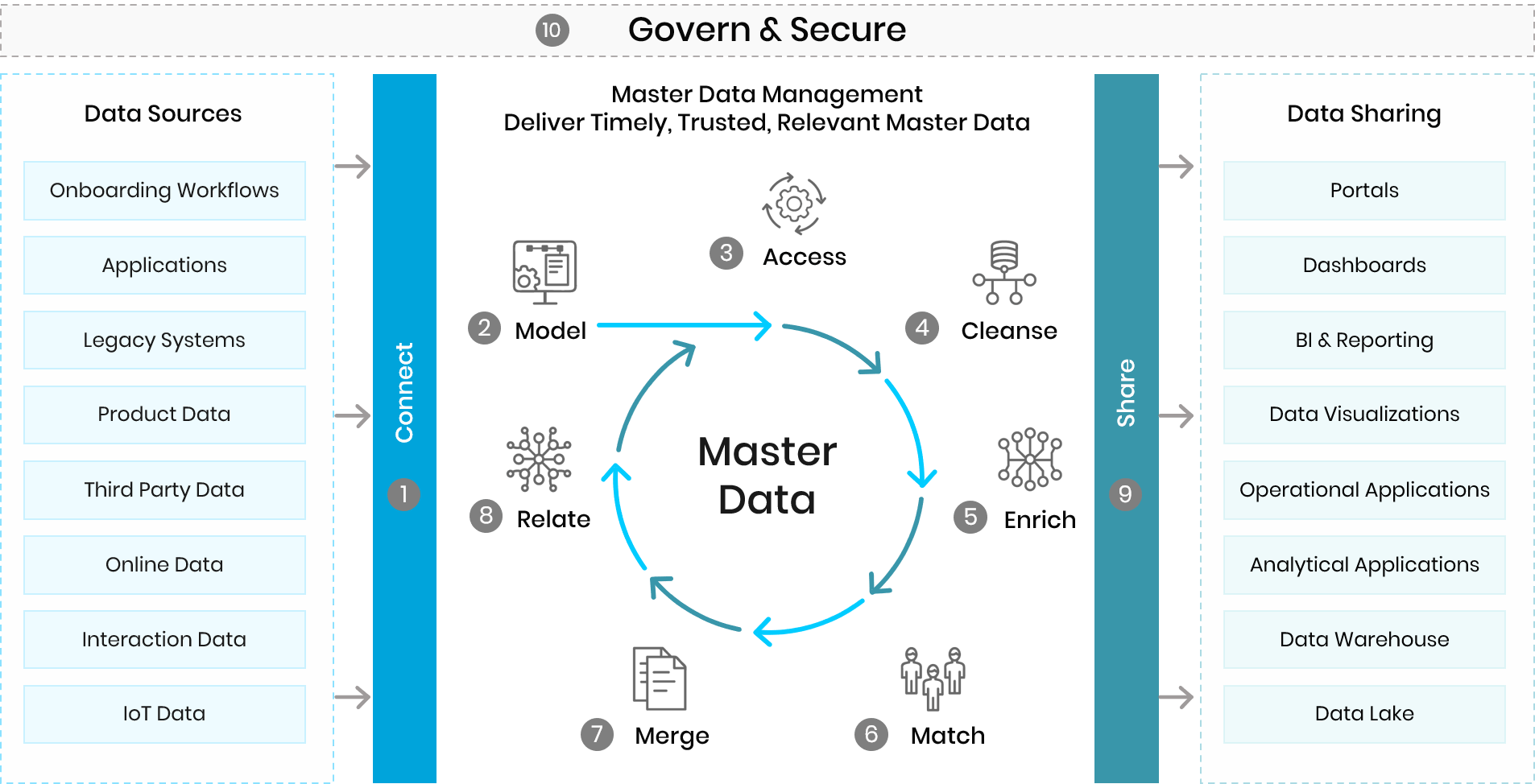A Framework for Success
Improving the consistency and quality of data has become a top priority in corporations around the globe. There is a growing imperative for businesses to deploy a master data solution that provides consistent reporting, regulatory compliance, and service-oriented architecture.
An effective Master Data Management (MDM) strategy serves all these functions, in addition to providing businesses with improved quality of data, better decision making, cost-effectiveness and a single source of truth (SSOT).
Developing the correct MDM strategy – one that supports corporate objectives – is a complex task. But with the right planning, preparation and execution, your organization can achieve an effective MDM solution.
What Is a Single Source of Truth?
A single source of truth or “golden record” is defined as the central location for company information. It ensures everyone is working from the same data framework across all departments, applications, and platforms. For a business to achieve a single source of truth, it requires normalization, which is a process that reduces data redundancy by eliminating duplicates and linking content from a central location.
From this central repository, master data becomes an organization’s SSOT. Development of an actionable SSOT-centric data structure will improve allocation of scarce resources, improve quality control, drive revenue growth and streamline business processes.

Why Master Data Management Is Key to Operational Excellence

Copyright © 2021 Trianz
Our research has shown that nearly 40% of businesses are investing in integrating data across functional areas. As just one example, a key area of focus is on integrating data across the front, middle and back offices to enable an enhanced customer journey and experience.
The flood of big data – unstructured, structured and semi-structured – can overwhelm companies that are not prepared to ingest, organize, and leverage data to create competitive advantage. Without an MDM solution to manage this flood of data, core KPIs across marketing, sales, service and back office operating efficiencies will begin to deteriorate relative to competitors.
With an MDM-powered, trusted view of business-critical data, organizations can gain actionable visibility that will lead to:
- Accelerated innovation and time to market
- Reduced time to value of mergers and acquisitions
- Enhanced customer insights and engagement
- Strengthened supplier and spend management
- Standardized production information management across different channels
- Eliminated cost and delays of manual data troubleshooting
- Minimized risk and improve regulatory compliance
- Supported data-driven reporting and decision-making
6 Steps in Developing a Master Data Management Strategy
Step 1. Define the Hierarchies
Business leaders, IT, and data stewards must have clearly defined roles when developing an MDM solution. This will not only unify the decision-making process, but also help to ensure everyone is complying with ongoing governance regulations.
The three core roles of a strong MDM program include:
- Governance committee - establishes the definitions, develops policies, and oversees the documentation on behalf of the organization.
- Administrators - are responsible for setting up and configuring the MDM solution.
- Data Stewards - are responsible for the overall maintenance and management of the data within the MDM solution.
Step 2. Think of the Big Picture
Setting up an effective MDM solution does not happen overnight. Our data shows that the average company takes six months or more to implement an enterprise-wide MDM solution. Be sure to channel the right resources into the project beforehand so that your efforts pay off in the long run.
Master Data Management Components and Processes

Copyright © 2021 Trianz
Step 3. Establish Data Governance
While data governance and data management are not synonymous, they are closely related. One should not exist without the other. An enterprise’s goal should be to integrate the business policy requirements as part of the collection and reporting of conformance to data governance. This is especially critical in an era of increasing regulations and government-mandated compliance policies.
Step 4. Keep Customer-Centricity in Mind
In an ever-evolving landscape of customer data, your MDM strategy should integrate consumer data into a definitive customer profile to improve customer relationships, grow your business, and improve business-related processes. To ensure a competitive advantage, ask the following questions when developing a framework for your consumer profiles:
- Do my consumer profiles consolidate and reconcile names, addresses, emails, phone numbers, and other identifying information?
- Do the profiles incorporate data on a customer’s purchased products and services across lines of business, as well as support inquiries, payment status, billings, subscriptions, and warranties?
- Will it reflect activity and interests on social media, as well as illustrate a customer’s sphere of influence among friends and followers?
Step 5: Deploy the Right MDM Software
As mentioned before, avoid creating a siloed approach to MDM. An effective master data management software solution should accomplish the following:
- Provide ready-to-run, domain-specific master data governance across channels, devices, and platforms
- Allow users to create, modify, and distribute master data across the enterprise landscape.
- Support the reuse of data models and validation frameworks with open integration to third-party products and services.
- Allow users to perform complex analyses of their data.
- Be able to scale easily as the enterprise grows.
Step 6. Stay Educated
To avoid regulatory and compliance issues, stay current on how information is being shared. Set up routine training and seminars among business and technology departments designed to accelerate your company’s evolution to that of a data-driven digital competitor.
Step 7. Monitor, Refresh, Review, Repeat
MDM is not a singular event. A good MDM strategy must include regular, synchronized updates to ensure that your organization has the most accurate and up-to-date information. If data alignment is considered a one-time occurrence, data discrepancies will continue to emerge, data quality will suffer, and your SSOT will become unreliable.
In Summary
Keeping best practices and MDM strategies in mind will maximize your realized value when implementing a master data solution. Critical to the program's success involves envisioning master data management as a fundamental element of enterprise structure.
Sustained involvement from key decision-makers, a constant focus on business value throughout the process, and a thorough governance framework will ensure that your MDM strategy will help your organization achieve operational excellence.